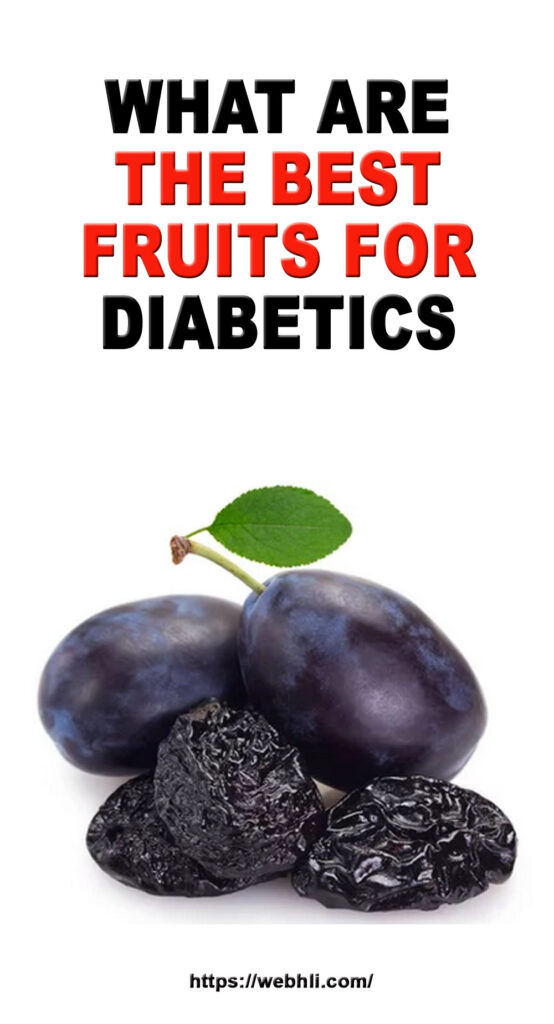
Fruit is always a good thing in any diet because of the minerals and vitamins they contain as well as fibre and phytochemicals which are good for the health of everyone. But due to the naturally high levels of sugar in some fruit, for diabetics the decision about what fruit to eat is a little more selective. So the question is, what are the best fruits for diabetics?
One way to judge this is to use a measure called the glycemic index (GI) which shows how quickly blood glucose levels rise after a diabetic has eaten a particular type of food. It doesn't take into account carbohydrates consumed, so isn't a catch-all number but works as a bit of a guideline. Glucose itself rates as a GI of 100.
Check out these related articles, too:
How to Look after Your Skin Once You Have Diabetes
The Skin Problems Resulting From Type 2 Diabetes
How To Stop Diabetes From Stealing Your Vision!
Diabetes Natural Home Remedies – Worth a Try?
Can Magnesium Prevent Diabetes?
Zinc Shown to Promote Insulin Production In Diabetics
Prevent Side Effects From Diabetes Drugs
Why You Should Stop Taking Drugs for Your Diabetes
What Does It Mean To “Reverse Diabetes?”
Apples
GI 38
Apples are good because they contain a lot of fibre, vitamin C and antioxidants as well as pectin which is found in the pulp and the peel. Pectin is a substance which helps to remove harmful waste products from the body, working as a natural detoxification process. Pectin also contains a chemical called galacturonic acid which has been shown to lower insulin requirements in diabetics by as much as 35%.
Grapefruit
GI 25
Grapefruit is another fruit which is high in vitamin C and soluble fibre. It also contains a flavonoid called naringenin which helps to balance insulin levels, as well as glucose levels in the blood and studies, have shown that one or two servings a day can actually help to reduce the chance of developing Type II diabetes in later life.
Oranges
GI 48
Oranges are higher on the GI index but still have lots of vitamin C and fibre as well as also containing naringenin the same as grapefruits. Oranges are also low fat and can assist in the management of weight, as being overweight is a risk factor for diabetes.
Cherries
GI 22
Cherries have one of the lowest numbers on the index and have loads of good stuff in them. As well as vitamin C, potassium, magnesium, iron, fibre and beta carotene, they are also antioxidants and contain anthocyanins. This is a chemical which gives them their red colour but also helps to increase insulin production in the body by as much as 50%.
Pears
GI 38
Pears are literally stuffed with vitamins; A, B1, B2, C, E, as well as folic acid,, copper, phosphorus, potassium and calcium. Of all the pears, Chinese pears are the best but every type is great for reducing blood sugar level. They can also help lower blood pressure as well as cholesterol, have antioxidants properties and boost the immune system, something which typically suffers in diabetics.
Kiwi
GI 52
Kiwi is one of the fruits called a superfruit. They have vitamins A, C and E, minerals and flavonoids and have been shown to help prevent asthma, obesity, colon cancer and even heart disease. It has more vitamin C than oranges, as much potassium as bananas and even protects against free radicals. It helps to control blood sugar levels as well as lowering cholesterol.
Prunes
GI 29
Prunes are known to be great for slowing the absorption of food which means glucose is also delayed. The soluble fibre in the prunes also help to settle blood sugar levels and also give a feeling of fullness which can be helpful in weight loss.
Good Energy Food for Diabetics
10 Simple Food Concepts Every Person Living With Diabetes Should Know
Making Cheesecake For Diabetics
Enjoy the Taste and Benefits of Diabetic Foods
Will The Mulberry Leaf Help Your Diabetes?
5 DIABETIC FRIENDLY SALADS Some Tasty
DIABETIC LEMON COCONUT COOKIES Some Tasty
Smoothies
One of the best ways of combining the fruits together is in a smoothie so if you have a blender you can add them all together for added benefits. Traditionally, smoothies often use milk, yoghurt or ice cream but for diabetics, options such as soy milk can be used as it adds protein and calcium with no saturated fat but still having a creamy taste. Another option is almond milk or low fat yoghurt to get the taste without adding any sugars to the mix.
Article Source: http://EzineArticles.com/8431838


 Protected by Patchstack
Protected by Patchstack